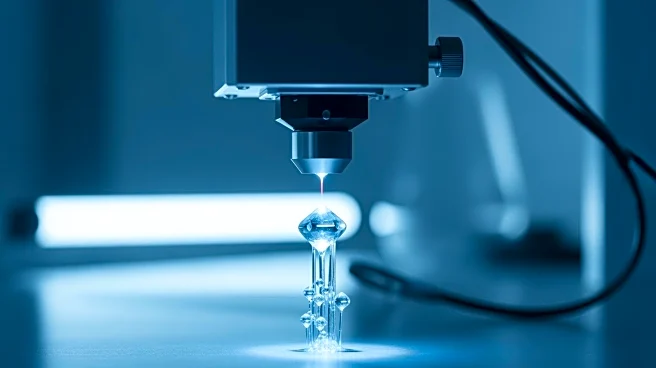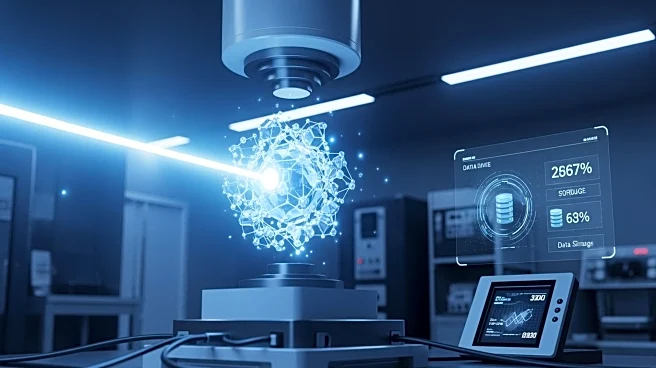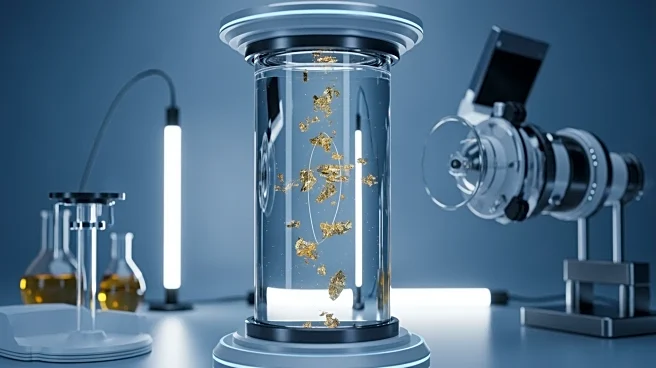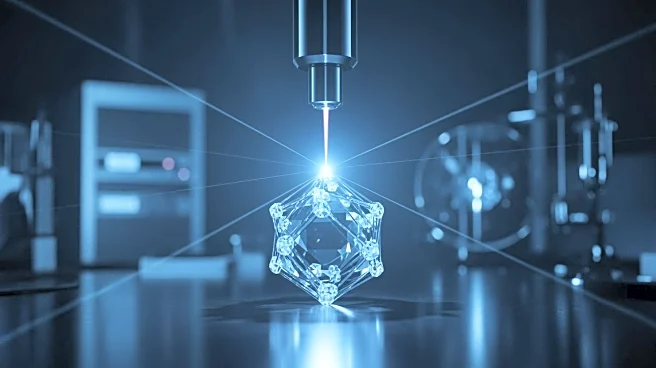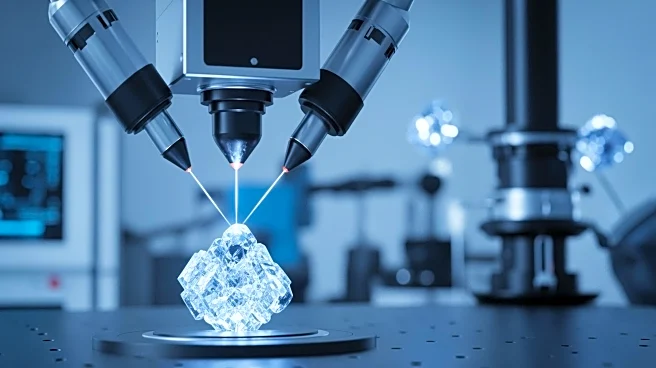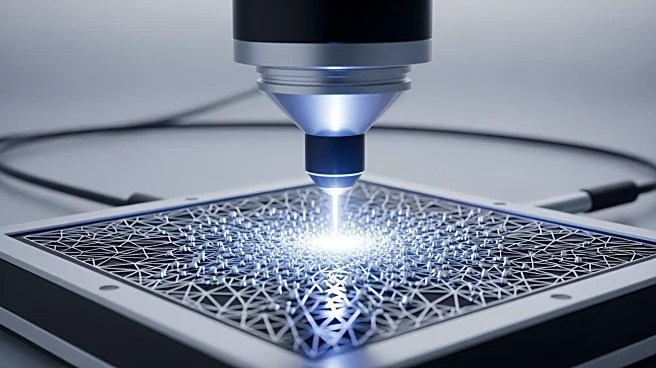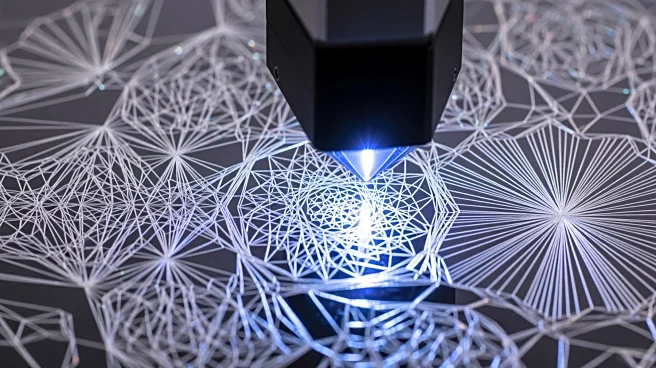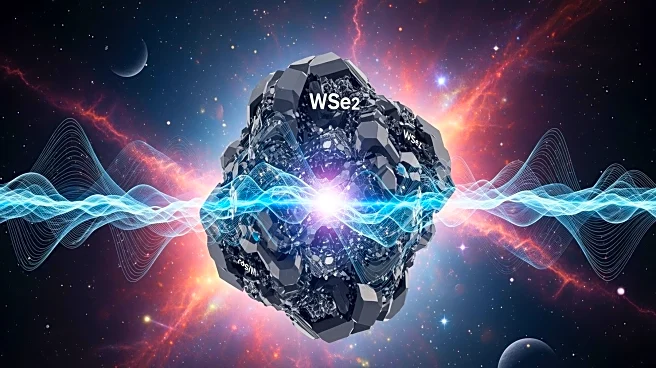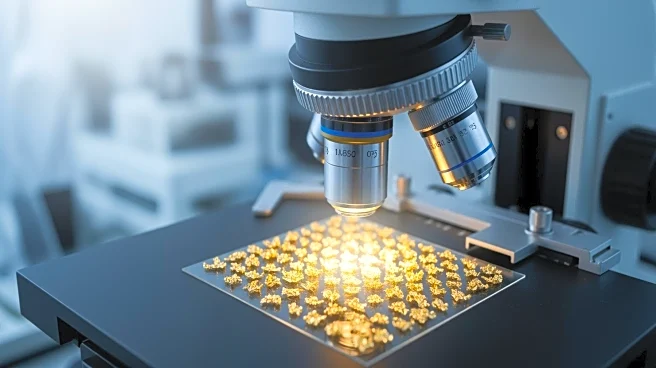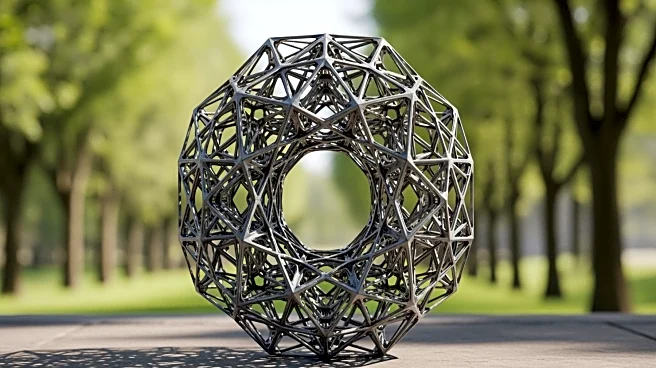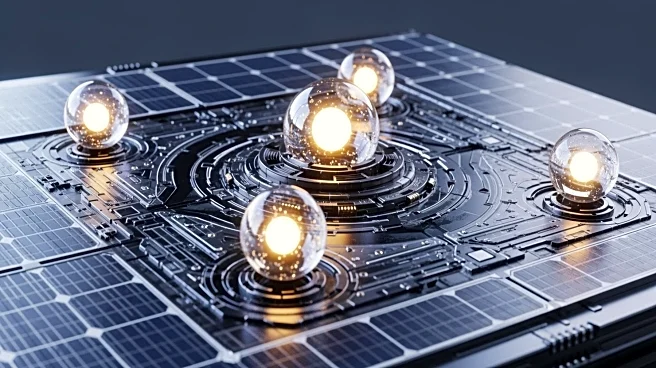What's Happening?
Researchers at Michigan State University, led by Elad Harel, have developed a novel method to precisely 'draw' crystals using lasers and gold nanoparticles. This technique involves heating a gold nanoparticle with a laser, which triggers crystal formation
within a solution of lead halide perovskite. By moving the nanoparticle with lasers, crystals can be formed exactly where needed in electronic devices. Traditional methods of crystal formation, such as vapor diffusion, often result in imprecise placement and size. The new method, known as plasmonic heating, allows for real-time observation of the process using high-speed microscopes. This approach could revolutionize the production of crystals used in various applications, including solar cells, LEDs, and semiconductors.
Why It's Important?
The ability to precisely control crystal formation has significant implications for the electronics industry. Crystals are integral to devices such as touchscreens, solar panels, and medical imaging equipment. The new technique promises to reduce costs and improve performance by allowing crystals to be placed exactly where needed. This could lead to cheaper and more efficient production of electronic components, potentially impacting industries reliant on optoelectronics and photodetectors. Furthermore, the method could enhance the capabilities of astronomical instruments, making space missions more cost-effective. The research also opens possibilities for applying the technique to other types of crystals, broadening its impact across various technological fields.
What's Next?
The research team plans to expand the technique by using multiple lasers across different wavelengths to create more intricate crystal patterns. They aim to test these patterns in real devices to evaluate their performance and cost-effectiveness. The success of these tests could lead to widespread adoption of the method in the electronics industry, potentially transforming manufacturing processes. Additionally, further research is needed to generalize the concept to other materials, which could broaden its applicability and benefits. The team is actively working on these developments, which could pave the way for new advancements in material science and technology.
Beyond the Headlines
The development of this laser-based crystal formation technique highlights the intersection of nanotechnology and material science. It raises questions about the ethical implications of manipulating materials at such a precise level, potentially leading to new standards in manufacturing and environmental impact. The ability to 'draw' crystals could also influence cultural perceptions of technology, as it represents a shift from traditional manufacturing methods to more advanced, precise techniques. This innovation may inspire further research into the applications of plasmonic heating and its potential to revolutionize other fields.
